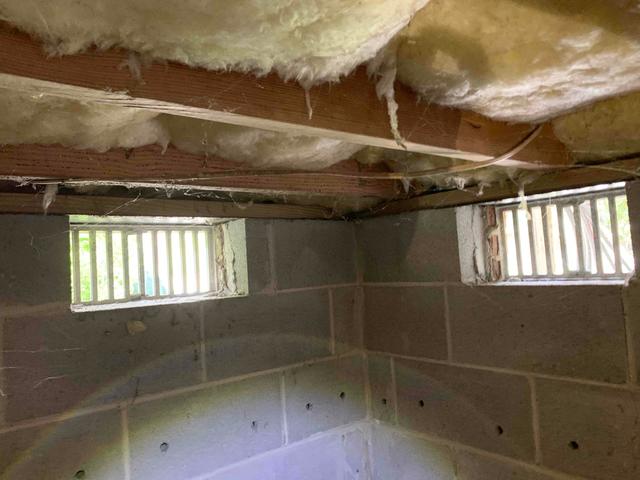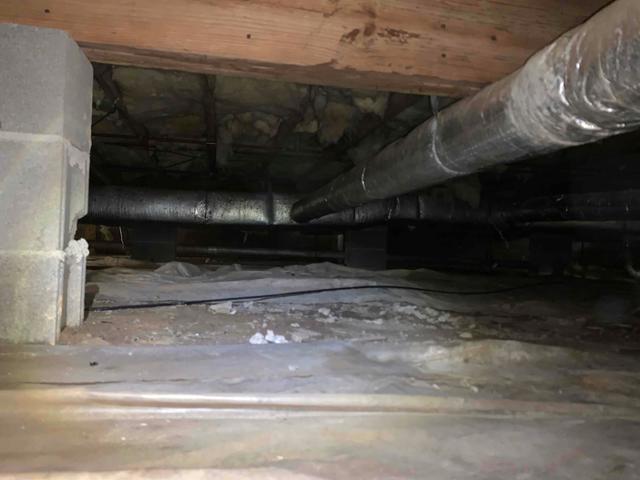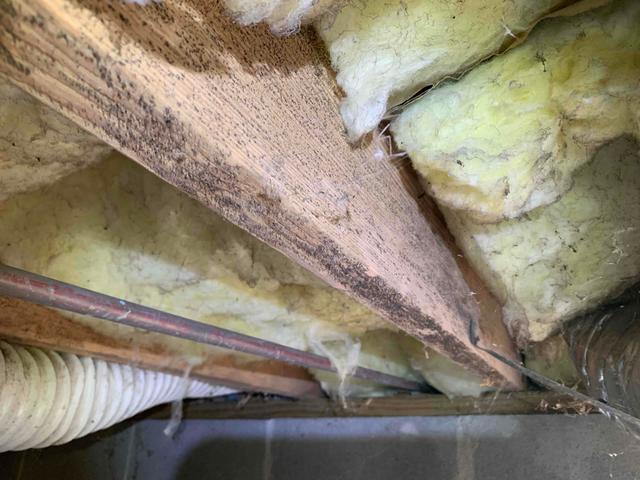
Open Vents on the Foundation Walls
Open vents line the foundation walls of this crawl space. When it comes to the relative humidity in the crawl space, it poses as a hindrance, rather than a solution. Outside air and moisture are free to enter the crawl space, where it becomes trapped, raising the relative humidity, and affecting the environment. Small critters and creatures are also able to enter through these vents, making your crawl space their home.

Efflorescence on the Foundation Walls
Efflorescence is visible along the foundation walls of this crawl space. This occurs when outside moisture forces its way through the porous cinderblock walls, pulling all the inner salts and sediments to the surface and leaving a chalky, powdery substance on the walls. The moisture seeping through the foundation walls adds to the elevated relative humidity and damp environment.

6-mil Vapor Barrier
A 6-mil vapor barrier was installed in this crawl space, but there are gaps in it and areas of the crawl space where the dirt floor is completely exposed. Moisture will rise from the earth and into the crawl space, raising the relative humidity. The dirt flooring can become muddy and difficult for service people to conduct work in such a messy environment, and it becomes ideal for pests, snakes, and rodents to build their nests.

Mold and Mildew Growth
Mold and mildew growth is visible on the wooden floor joists of this crawl space. With the walls and floors being unsealed and uninsulated, the high relative humidity and warm temperatures allow mold growth to occur on any organic materials in the crawl space. With approximately 50% of the air inside your home sourcing from the crawl space, musty odors often rise into the home above and can even affect those with allergies or asthma.


